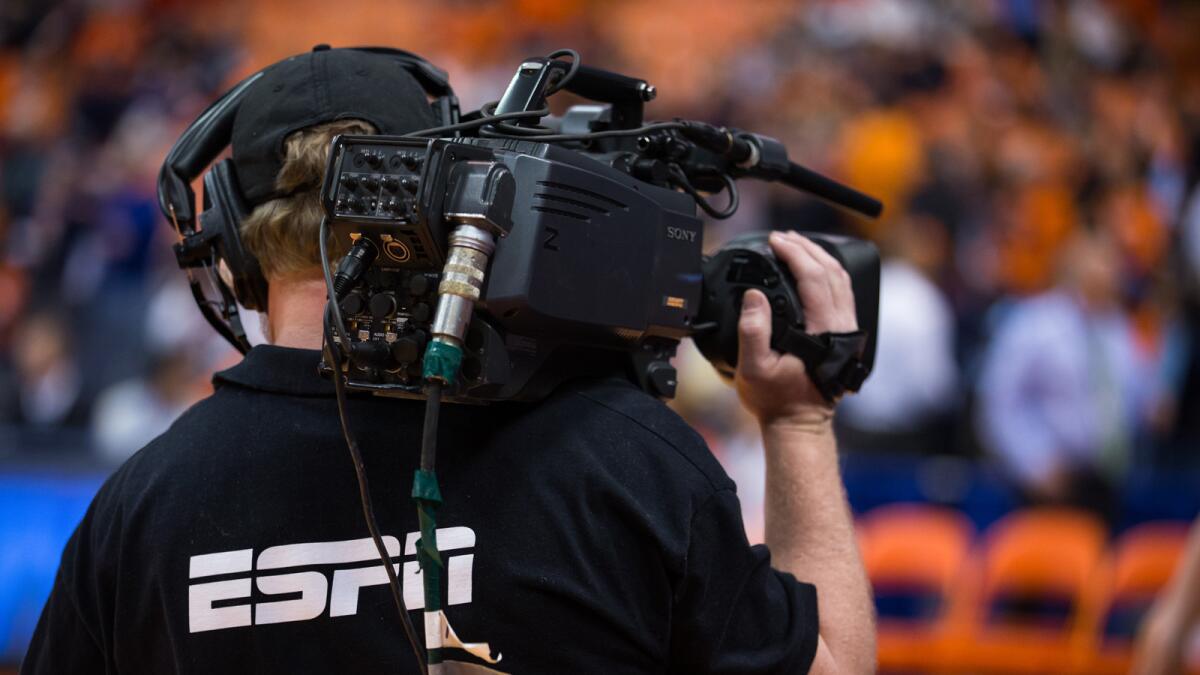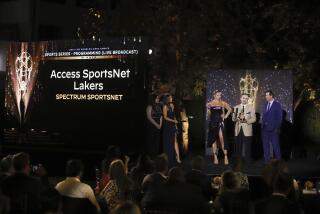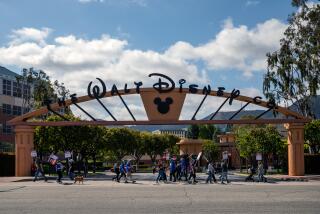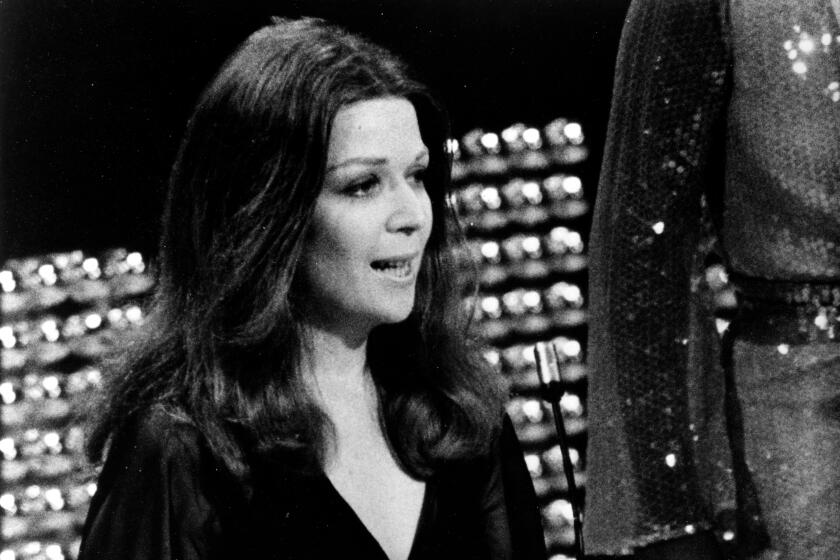ESPN to lay off nearly 4% of workforce amid changing pay-TV landscape

A cameraman working for ESPN network operates a camera at court side.
Reporting from NEW YORK — ESPN is cutting nearly 4% of its workforce as the Disney-owned sports network adapts to the new TV landscape where viewers have greater control over how they watch.
The company said Wednesday that the cuts will eliminate 300 positions at the company, which has 8,000 employees worldwide.
Although the job layoffs will be across all divisions, a spokesperson said ESPN is expected to continue investment, and hiring, in the technology necessary to meet the growing demand of online and mobile viewing of its content. The network also said it remains committed to cable and satellite distribution, and has no plans to offer an “over-the-top” streaming service for broadband viewers similar to HBO Now.
Stunning photos, celebrity homes: Get the free weekly Hot Property newsletter >>
In a message to employees, ESPN President John Skipper said the job cuts are “part of a broad strategy to ensure we’re in position to make the most of opportunities to build the future of ESPN.” He also cited a need for “integrating emerging technology into all aspects of our business.”
Although still a highly profitable unit of Disney, ESPN has been under pressure to control costs because it no longer can depend on steady growth from its most reliable revenue stream: fees from cable and satellite subscribers. Fees for all of Disney’s television channels accounted for $10.6 billion in revenue during its 2014 fiscal year.
Advertising revenue is also under pressure as more dollars shift from television to digital platforms where younger viewers are spending more time watching video.
“When you see a downturn in the advertising market, even a modest decline, these companies have to react,” said Derek Baine, cable television analyst with consulting firm SNL Kagan. “Other media companies have also had layoffs.”
ESPN is also feeling the squeeze on the cost side as sports rights fees continue to escalate. The value of sports programs will continue to grow as they command massive numbers of viewers who watch TV live without zipping through commercials.
The network’s most important contract, NFL’s “Monday Night Football,” costs $1.9 billion a year. That was a 72% increase over the previous contract that ended in 2013. In its new deal to carry NBA games, ESPN’s fee nearly tripled to $1.4 billion per year.
ESPN has long been the beneficiary of the cable industry’s practice of “bundling” channels, which has all subscribers paying for its suite of programming as part of the larger packages they buy whether they watch them or not. Cable operators pay ESPN the highest monthly per-subscriber fees in the industry — an average of $6.64, according to SNL Kagan.
“We’ve never seen a profit-driving machine in the history of media like we have seen in ESPN,” said Jeffrey Cole, director of the Center for the Digital Future at USC Annenberg School for Communication and Journalism. “People were being forced to pay more than $7 a month for ESPN, and they weren’t given a choice, and ESPN sold advertising on top of that.”
Nielsen says ESPN currently reaches 92 million cable and satellite subscribers, down from its peak of 98 million.
The erosion is expected to continue as a growing number of homes do without TV subscriptions as more programming can be accessed directly through broadband Internet. Video distributors are also experimenting with smaller, less-expensive cable channel packages known as “skinny bundles.” (Disney is suing one of them, Verizon, for offering a basic package without ESPN, saying it’s in violation of the company’s agreement to carry the channel.)
An ESPN spokesperson said the company continues to support the cable bundle as the main distribution source of its programming. But Cole believes it will eventually need to consider such an over-the-top service to meet consumer demand.
“Ultimately, I think all of these channels are going to go over the top, they will have to,” said Cole. “ESPN will probably go over the top but right now they don’t want to antagonize their largest customers, the pay-TV operators.”
The ESPN spokesperson believes the network is serving online viewers with its WatchESPN app, which enables consumers to watch on a variety of Internet streaming and mobile devices that’s included as part of a cable or satellite subscription.
Although cable network ratings are stagnant, WatchESPN continues to see new highs for streaming event coverage. September was its most watched month ever outside of World Cup soccer coverage.
ESPN’s coverage of the Oct. 6 American League Wild Card game was its most streamed Major League Baseball contest ever, and Saturday’s stunning contest between University of Michigan and Michigan State was its second most-streamed college football game.
But the company will continue experimenting with more digital-only “over-the-top” services such as the one it offered earlier this year for its coverage of the Cricket World Cup. Fans were able to stream full coverage of the matches for $99.
Even with the announced cuts, ESPN said there are no plans to cancel programs or drop any on-air talent.
The subject of ESPN belt-tightening first surfaced earlier in the year when it chose not to renew the contracts of three of its most high-profile names, Keith Olbermann, Colin Cowherd and Bill Simmons, the Internet provocateur who helped create the channel’s documentary division and launched its younger-skewing website Grantland.
Although Olbermann’s show had scored poor ratings, leading ESPN to pass on a new deal, the company did engage in discussions with Cowherd and Simmons before they decided to head elsewhere. Cowherd joined Fox Sports and Simmons signed with HBO.
“Those situations were separate and distinct,” said the ESPN spokesperson who noted the moves were not related to the current reorganization.
MORE:
Watch ESPN trailer ’30 for 30: Trojan War’
ESPN suspends Britt McHenry after video shows her belittling stranger
Disney, other media stocks slide on TV business concerns and market turmoil
More to Read
From the Oscars to the Emmys.
Get the Envelope newsletter for exclusive awards season coverage, behind-the-scenes stories from the Envelope podcast and columnist Glenn Whipp’s must-read analysis.
You may occasionally receive promotional content from the Los Angeles Times.










